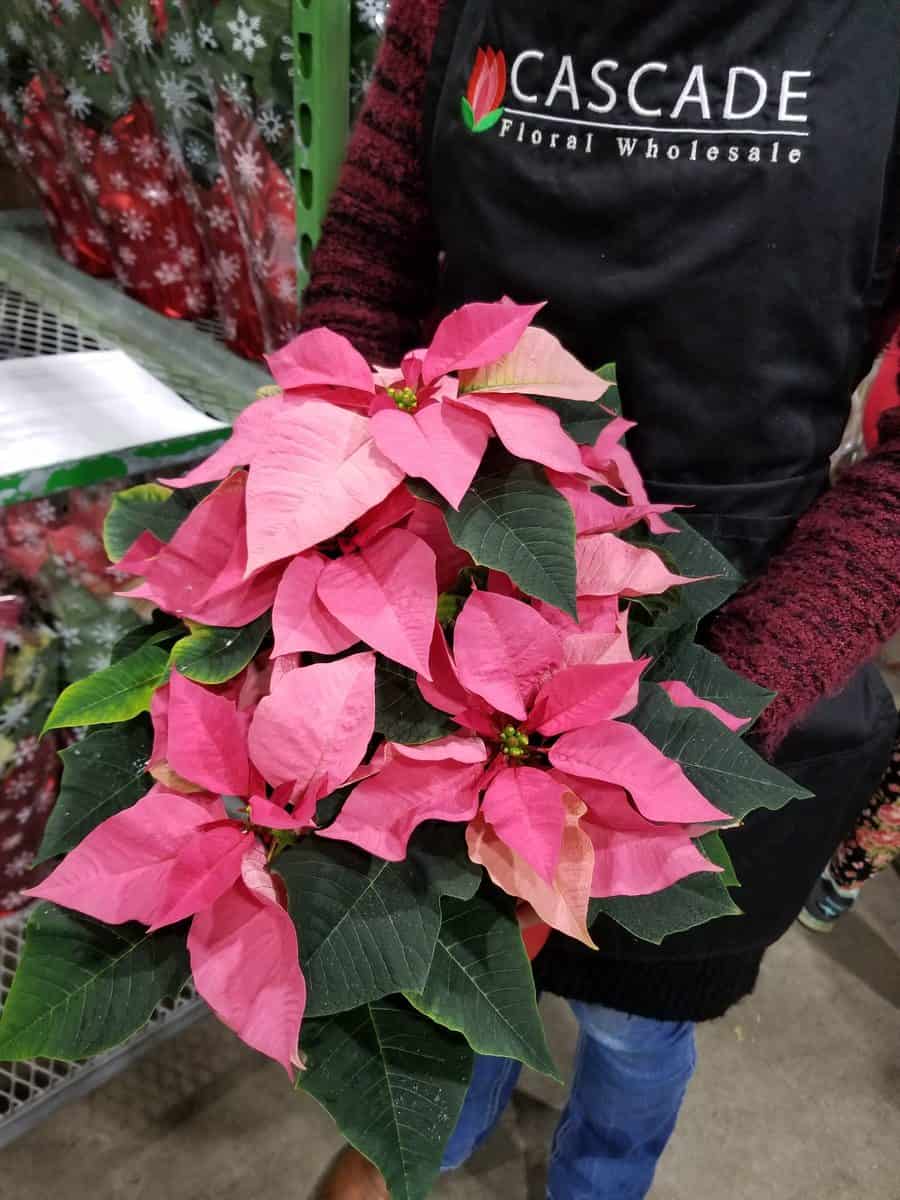
The Scoop On Poinsettias
National Poinsettia Day came and went last week, but let’s face it, poinsettias rule all of December. From the bright and bold variety to the more pastel petaled, this is one plant that is inextricably tied to the season.
Before we start talking color, let’s set one thing straight: The poinsettia flower is really a type of leaf called a bract. The real flower is that bunch of teensy green or yellow buds clustered in the center there, around which the bracts congregate. That’s where the pollen lives, enabling these beautiful bloomers to propagate. Want to impress you next-door neighbor? Refer to the flower part by its real name: cyathia.
Bracts come in a variety of colors, from blazing red to rosy pink to white as a hillside of snow. As if that’s not enough, often the bracts are flecked with various colors, giving them a marbled effect. But how do they come to be all of those colors?
First, a little backstory. Poinsettias are native to southern Mexico, and it was the first U.S. ambassador there, a one Joel Roberts Poinsett, who in 1828 spotted them growing along the road. The physician and botanist sent some clippings home to South Carolina, and the rest is history. Thanks to the cultivation efforts of Poinsett and others after him, we now have over 100 varieties of the shrub, and it’s the highest-selling potted plant in the country.
Which brings us to their unmistakable look, long associated with the holiday season. In their native Mexico, poinsettia were used by the Aztecs to dye fabric. They were always used in religious ceremonies because red was considered a holy color. Ironically, it’s the darkness that makes these shrubs so bright. The process is called photoperiodism, which is a natural phenomenon for certain plants and animals to the length of day or night. In the case of the poinsettia, 12-14 hours of darkness for weeks at a time will cause the bracts to change color. Today, we coax poinsettia to bloom in December, starting the process in October.
By the way, that stunning scarlet version? It’s official name is “Prestige Red,” though it has also been referred to as both lobster and flame-leaf flower.


